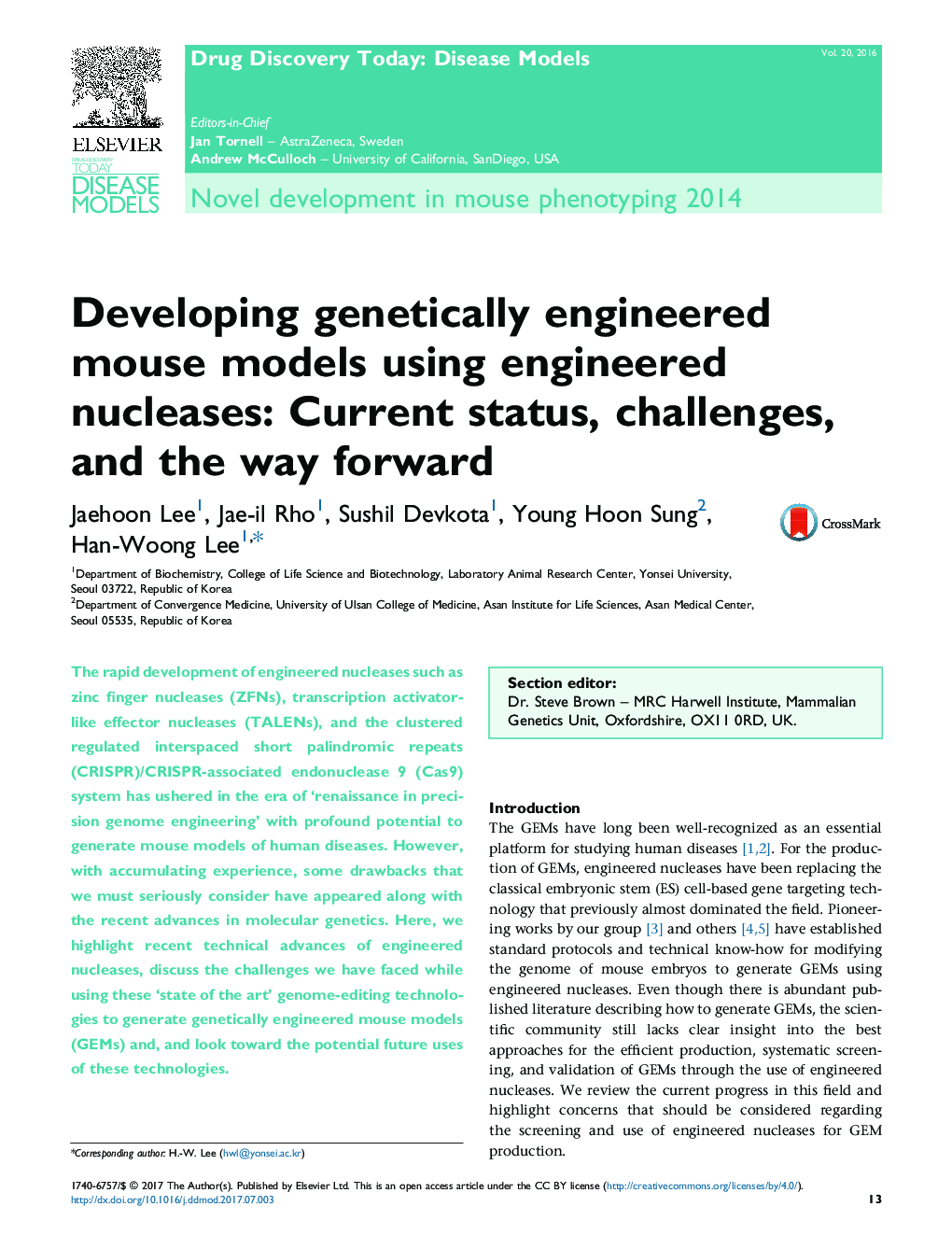| Article ID | Journal | Published Year | Pages | File Type |
|---|---|---|---|---|
| 8411074 | Drug Discovery Today: Disease Models | 2016 | 8 Pages |
Abstract
The rapid development of engineered nucleases such as zinc finger nucleases (ZFNs), transcription activator-like effector nucleases (TALENs), and the clustered regulated interspaced short palindromic repeats (CRISPR)/CRISPR-associated endonuclease 9 (Cas9) system has ushered in the era of 'renaissance in precision genome engineering' with profound potential to generate mouse models of human diseases. However, with accumulating experience, some drawbacks that we must seriously consider have appeared along with the recent advances in molecular genetics. Here, we highlight recent technical advances of engineered nucleases, discuss the challenges we have faced while using these 'state of the art' genome-editing technologies to generate genetically engineered mouse models (GEMs) and, and look toward the potential future uses of these technologies.
Related Topics
Life Sciences
Biochemistry, Genetics and Molecular Biology
Biotechnology
Authors
Jaehoon Lee, Jae-il Rho, Sushil Devkota, Young Hoon Sung, Han-Woong Lee,
